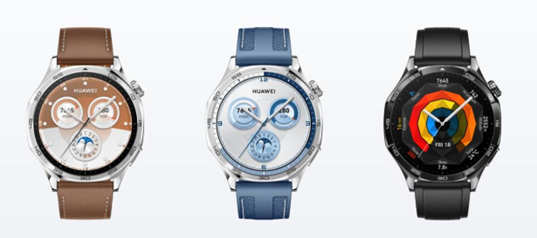GS I-Indian culture covers the salient features of Literature, Art Forms, and Architecture from ancient to modern times
ASI’s excavations at the Harappan site of Rakhigarhi
Key takeaways from the news:
Best of Express Premium
S Somanath: ‘Private players in space sector can boost defence, manufactu...Afghan economy in tatters, relations on hold, Delhi and Kabul trade via D...Explained: NATO expansion & RussiaExplained: Where the rupee is headed, and what its fall means to consumer...More Premium Stories >>-The latest round of excavations revealed the structure of some houses, lanes and drainage systems, and a jewellery-making unit. Pieces of copper, gold jewellery, terracotta toys, earthen pots, and seals were also found.
https://images.indianexpress.com/2020/08/1x1.png-This is the first-time excavations have been done on Mound No. 3, which has revealed “an aristocratic settlement”.
– The excavation aims to understand Rakhigarhi and identify the individuality and interrelationship of the seven mounds. Also, to make Rakhigarhi accessible to people by exposing the structural remains and conserving them for the future, along with providing amenities to the visitors.
– Rakhigarhi is an archaeological site belonging to the mature phase of the Indus Valley Civilisation, dating to 2600-1900 BCE. It was among the largest settlements of the ancient civilization, though most of it remains unexcavated. The site is located in the Ghaggar-Hakra River plain.
– Rakhigarhi is in Haryana’s Hisar district. Rakhigarhi is among the five iconic sites announced by Union Finance Minister Nirmala Sitharaman during her Budget Speech in February 2020.
-The other iconic sites are Hastinapur in Uttar Pradesh, Sivasagar in Assam, Dholavira in Gujarat, and Adichanallur in Tamil Nadu.
Point to ponder: Why are the recent excavations at Rakhigarhi important for the history of Indus Civilization?
Carbon dating of excavated finds in Tamil Nadu reveals that Iron was used in India 4,200 years ago.
Key takeaways from the news:
– The earliest evidence of iron use was from 1900-2000 BCE for the country, and from 1500 BCE for Tamil Nadu.
-The latest evidence dates the findings from Tamil Nadu to 2172 BCE.
– The excavations are from Mayiladumparai near Krishnagiri in Tamil Nadu, about 100 km south of Bengaluru. Mayiladumparai is an important site with cultural material dating back between the Microlithic (30,000 BCE) and Early Historic (600 BCE) ages.
-With the latest evidence tracing our Iron Age to 2000 BCE from 1500 BC, we can assume that our cultural seeds were laid in 2000 BCE.
Point to ponder: Why is the evidence iron so important to reconstruct the past?
GS I- Salient features of Indian Society, Social empowerment, Role of women and women’s organization
A two-judge Bench of the Delhi High Court has delivered a split verdict in a batch of petitions challenging the exception provided to marital rape in the Indian Penal Code
Key takeaways from the news:
-Section 375 defines rape and lists seven notions of consent that, if vitiated, would constitute the offense of rape by a man. However, the provision contains a crucial exemption: “Sexual intercourse or sexual acts by a man with his own wife, the wife not being under eighteen years of age, is not rape.”
-This exemption essentially allows a marital right to a husband who can with legal sanction exercise his right to consensual or non-consensual sex with his wife.
-The exemption is also under challenge before the Gujarat High Court on the grounds that it undermines the consent of a woman based on her marital status. Separately, the Karnataka HC has allowed the framing of marital rape charges against a man despite the exemption in the law.
Point to ponder: What does a split verdict mean?
GS I- Important Geophysical phenomena such as earthquakes, Tsunami, Volcanic activity, cyclones etc., geographical features and their location- changes in critical geographical features (including water-bodies and ice-caps) and in flora and fauna and the effects of such changes.
Cyclone Asani
Key takeaways from the news:
-The Indian Meteorological Department has predicted the cyclone Asani to intensify into a ‘severe cyclone’ over Southeast regions of Bay of Bengal.
-The name Cyclone Asani has been given by Sri Lanka. It means ‘wrath’ in Sinhalese.
-Cyclones that Hit India in 2020-21: Tauktae, Yaas, Nisarga, Amphan.
-India has a bi-annual cyclone season that occurs between March to May and October to December. But on rare occasions, cyclones do occur in June and September months.
-Cyclone Gulab became the third cyclone of the 21st century to make landfall over the east coast in September, after tropical cyclone Date in 2018 and Pyarr in 2005.
-Typically, tropical cyclones in the North Indian Ocean region (Bay of Bengal and Arabian Sea) develop during the pre- monsoon (April to June) and post-monsoon (October to December) periods.
-May-June and October-November are known to produce cyclones of severe intensity that affect the Indian coasts.
-The IMD classifies cyclones on the basis of the Maximum Sustained Surface Wind Speed (MSW) they generate.
-The cyclones are classified as severe (MSW of 48-63 knots), very severe (MSW of 64-89 knots), extremely severe (MSW of 90-119 knots) and super cyclonic storms (MSW of 120 knots or more). One knot is equal to 1.8 kmph (kilometers per hour).
-A tropicalis an intense circular storm that originates over warm tropical oceans and is characterized by low atmospheric pressure, high winds, and heavy rain.
-A characteristic feature of tropical cyclones is the eye, a central region of clear skies, warm temperatures, and low atmospheric pressure.
-Storms of this type are called hurricanes in the North Atlantic and eastern Pacific and typhoons in Southeast Asia and China. They are called tropical cyclones in the southwest Pacific and Indian Ocean region and Willy-willies in north-western Australia.
-Storms rotate counter clockwise in the northern hemisphere and clockwise in the southern hemisphere.
-The conditions favourable for the formation and intensification of tropical storms are: large sea surface with temperature higher than 27° C, presence of the coriolis force, small variations in the vertical wind speed, a pre-existing weak low- pressure area or low-level-cyclonic circulation or upper divergence above the sea level system.
Point to ponder: How are cyclones named?
GS II- Important aspects of governance, transparency and accountability, e-governance- applications, models, successes, limitations, and potential; citizens charters, transparency & accountability and institutional and other measures
Worried India rating may turn junk, govt pushed ‘narrative management’ strategy
Key takeaways from the news:
-During the first wave of Covid-19 pandemic in the mid-2020, the Ministry of Finance was drafting a strategy to counter the “negative commentary” on India by global think-tanks, indices, and media, amidst worries that this could lead to downgrading of sovereign rating to “junk”.
-In June 2020, then Principal Economic Advisor in the Ministry of Finance, Sanjeev Sanyal, prepared a presentation — “Subjective Factors that impact India’s Sovereign Ratings: What can we do about it?” — for internal circulation within the government.
-Moody’s downgraded India on June 1, 2020, from Baa2 to Baa3 (the lowest investment grade of ratings) and maintained a negative outlook.
-Fitch Ratings too revised India’s outlook to negative from stable in June, 2020.

– Observing that most reports in 2019-20 projected a “negative commentary” on India, the Ministry of Finance’s economic division prepared a strategy to counter the “negative commentary” on India by global think-tanks, indices, and media.
-Subsequently, the Central government reached out to sovereign rating agencies.
-In October, 2021, Moody’s Investors Service raised the outlook on India’s sovereign rating to ‘stable’ from ‘negative’ in a revision after almost two years, minimising the chances of any rating downgrade.
-The presentation noted that 18-26 per cent of a country’s sovereign rating is based on subjective factors such as assessments on governance, political stability, rule of law, corruption, press freedom, and so on
-Rating agencies used the World Bank’s World Governance Indicators (WGI) as a proxy for these subjective factors. Highlighting WGI as the single-most important index, the inputs that go into the making of the WGI were “arbitrary” and based on impressions from the Western press or small surveys of NGOs and a handful of academics.
-The WGI scores run with a two-year lag. Hence, the latest available scores are for the year 2018.
-There is a danger that we may witness a drop in WGI scores due to the latest negative commentary on India by think tanks, survey agencies and international media.
-This could possibly downgrade our Sovereign Ratings to jun.
-Hence, it is of utmost importance to reach out to these think tanks and survey agencies and set a positive narrative about India in general.
Point to ponder: What are the Sovereign Credit Rating Agencies?
GS II- Statutory, regulatory and various quasi-judicial bodies
Aadhar can’t be used in police investigations: UIDAI
Key takeaways from the news:
-The UIDAI was responding to a query from the Delhi High Court in connection with a 2018 robbery and murder at a jewellery shop in Delhi.
-The query came after the prosecution sought to know if potential fingerprints and photographs of unknown accused could be matched with the Aadhaar database to identify the culprits.
-In an order passed in February, the High Court asked the UIDAI to respond whether the Aadhaar Act 2016 permits the same.
-The UIDAI said in its affidavit that sharing or use of biometric information for any use other than the generation of the Aadhaar number, and authentication, is “impermissible”.
-Section 29 of the Aadhar Act places restrictions on sharing information collected or created under the Act.
-The UIDAI also referred to regulation 3 of the Aadhaar Act, which says “core biometric information collected by the Authority under the Act shall not be shared with anyone for any reason whatsoever”.
-The UIDAI also added that it does not have the technology to match fingerprints etc found at the scene of a crime with those available on its database.
-The UIDAI added that the biometrics information is only used for de-duplication of residents and to ensure uniqueness of Aadhaar number.
-The UIDAI submitted that as per the mandate of the Aadhaar Act and the direction of the Supreme Court, such information cannot be provided without giving an opportunity of hearing to the Aadhaar cardholder in question.
Point to ponder: Why according to UIDAI Aadhaar be used for police investigation?
GS II- Government policies and interventions for development in various sectors and issues arising out of their design and implementation
Sedition law and Supreme Court’s fresh directives
Key takeaways from the news:
-The Supreme Court directed the Centre and states to keep in abeyance all pending trials, appeals, and proceedings with respect to the charge framed under Section 124 A of the Indian Penal Code (IPC), which deals with the offence of sedition, till the central government completes the promised exercise to reconsider and re-examine the provision.
-Section 124A defines sedition as: “Whoever, by words, either spoken or written, or by signs, or by visible representation, or otherwise, brings or attempts to bring into hatred or contempt, or excites or attempts to excite disaffection towards, the Government established by law shall be punished with imprisonment for life, to which fine may be added…”
-The provision also contains three explanations:
1- The expression “disaffection” includes disloyalty and all feelings of enmity
2- Comments expressing disapprobation of the measures of the Government with a view to obtaining their alteration by lawful means, without exciting or attempting to excite hatred, contempt,or disaffection, do not constitute an offense under this section
3- Comments expressing disapprobation of the administrative or other action of the Government without exciting or attempting to excite hatred, contempt or disaffection, do not constitute an offense under this section.
Point to ponder: What has been the historical and constitutional debate over the sedition law?
GS III- Indian Economy and issues relating to planning, mobilization, of resources, growth, development and employment.
The rupee fell to an all-time low on Monday, and is currently at 77.20 to the American dollar.
Key takeaways from the news:
-The rupee’s exchange rate vis-a-vis a particular currency, say the US dollar, tells us how many rupees are required to buy a US dollar. To buy (import) a US product or service, Indians need to first buy the dollars and then use those dollars to buy the product. The same holds true for Americans buying something from India.
-If the rupee’s exchange rate “falls”, it implies that buying American goods would become costlier. At the same time, Indian exporters may benefit because their goods now are more attractive (read cheaper) to the American customers.
-In a free-market economy, the exchange rate is decided by the supply and demand for rupees and dollars.
Point to ponder: Why does the rupee fall remain a worry?
Retail inflation at 8 years high of 7.79 per cent
Key takeaways from the news:
-India’s retail inflation rose by 7.79 per cent in April, according to the latest data released by the Ministry of Statistics and Programme Implementation.
-Inflation in food items rose by even higher — 8.38 per cent in April — according to the MoSPI’s Consumer Food Price Index (see Table 1 below).
– However, the biggest jump was registered in fuel prices, which rose by almost 11 per cent in April. This is a direct impact of the higher crude oil prices being passed through to the consumers in the wake of the war in Ukraine.
– Retail inflation essentially refers to the rate at which the general price level went up in a particular month (April in the current instance) over what it was in the same month a year ago. The change is expressed as a percentage. Retail inflation also refers to the prices faced by consumers, and not the ones prevailing in the wholesale market.
-The retail inflation level is the most important measure of inflation in India because it is this inflation rate that India’s central Bank, the RBI, targets to maintain price stability. According to the law, the RBI is supposed to keep overall retail inflation at the 4% level. However, the law allows RBI a leeway of two percentage points. In other words, in a particular month, retail inflation can vary between 2% and 6%.
Point to ponder: What is Inflation? What are the different types of inflation?
GS III- Awareness in the fields of IT, Space, Computers, robotics, nano-technology, bio-technology and issues relating to intellectual property rights.
1st image of Milky Way’s huge black hole
Key takeaways from the news:
-The Milky Way black hole is called Sagittarius A(asterisk), near the border of the Sagittarius and Scorpius constellations. It is 4 million times more massive than our sun.
-Astronomers believe nearly all galaxies, including our own, have these giant black holes at their center, where light and matter cannot escape, making it extremely hard to get images of them.
-This is not the first black hole image. The same group released the first one in 2019 and it was from a galaxy 53 million light-years away. The Milky Way black hole is much closer, about 27,000 light-years away. A light-year is 5.9 trillion miles (9.5 trillion kilometers).
Point to ponder: What is a black hole?




